Visiting old places
1
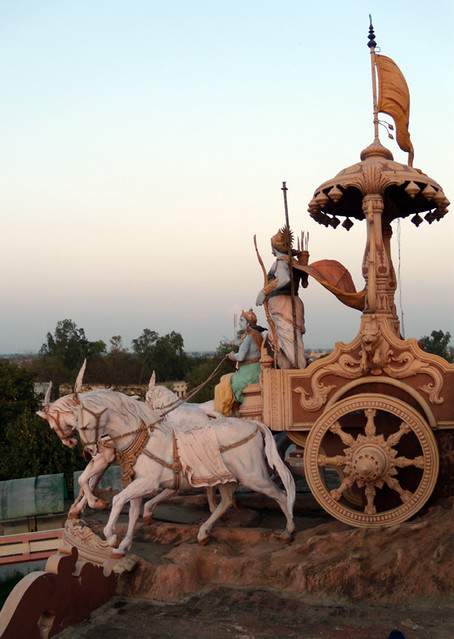
Let's venture into some cities that are mentioned in the great epic Mahabharata
and find out their geographical position in the present India.
and find out their geographical position in the present India.
Gandhar: (Sindh Pradesh, Rawalpindi)
2
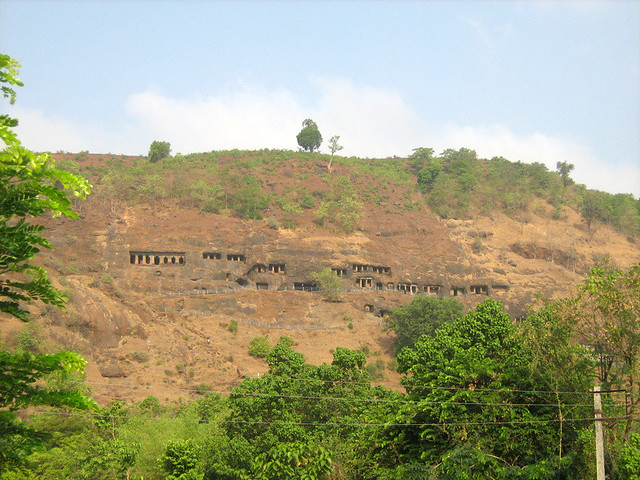
This is an ancient city of Mahabharata times situated to the west of River Sindhu
in Sindhu Pradesh. Dhritrashtra's wife Gandhari was the daughter of King Subal
of Gandhar. Gandhari's brother Shakuni was Duryodhan's maternal uncle who
defeated Pandavas by fraud in gamble and became one of the reasons of the war
of Mahabharata.
in Sindhu Pradesh. Dhritrashtra's wife Gandhari was the daughter of King Subal
of Gandhar. Gandhari's brother Shakuni was Duryodhan's maternal uncle who
defeated Pandavas by fraud in gamble and became one of the reasons of the war
of Mahabharata.
Takshashila: (Rawalpindi, present day Pakistan)
3
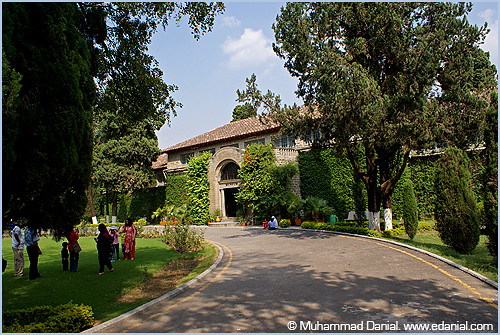
Takshashila was an ancient city of Mahabharata time and capital of Gandhar
Desh. Dhritrashtra's wife Gandhari was the daughter of King Subal of Gandhar.
After the war of Mahabharata when the Pandavas left for Himalayas, Parikshit
was crowned the King. He died due to a snake bite. Then to take revenge of his
death, Parikshit's son Janmejay performed a "Nagyagya" in Takshashila and had
killed many snakes.
Kekaya Pradesh: (North border of Jammu and Kashmir)
Desh. Dhritrashtra's wife Gandhari was the daughter of King Subal of Gandhar.
After the war of Mahabharata when the Pandavas left for Himalayas, Parikshit
was crowned the King. He died due to a snake bite. Then to take revenge of his
death, Parikshit's son Janmejay performed a "Nagyagya" in Takshashila and had
killed many snakes.
Kekaya Pradesh: (North border of Jammu and Kashmir)
4
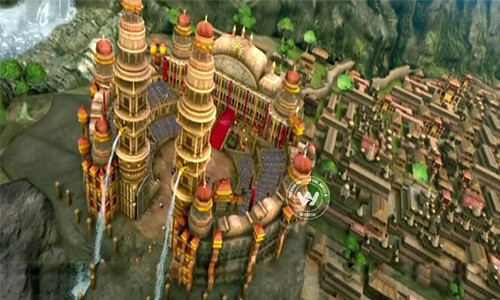
Kekaya Pradesh was an ancient city of the Mahabharata times. Jaysen, the King
of Kekaya was married to Radhadevi, sister of Vasudev. His son Vind was a
friend of Jarasandh and Duryodhan. He wanted to get his sister married to
Duryodhan but she loved Krishna and so married Krishna. During the period
of Mahabharata, Kekaya Pradesh was famous for its valorous warriors. Jaysen's
son Vind supported the Kauravas in the war of Mahabharata.
Madra Desh: (Other side of the Himalayas in the North, Jammu- Kashmir)
of Kekaya was married to Radhadevi, sister of Vasudev. His son Vind was a
friend of Jarasandh and Duryodhan. He wanted to get his sister married to
Duryodhan but she loved Krishna and so married Krishna. During the period
of Mahabharata, Kekaya Pradesh was famous for its valorous warriors. Jaysen's
son Vind supported the Kauravas in the war of Mahabharata.
Madra Desh: (Other side of the Himalayas in the North, Jammu- Kashmir)
5
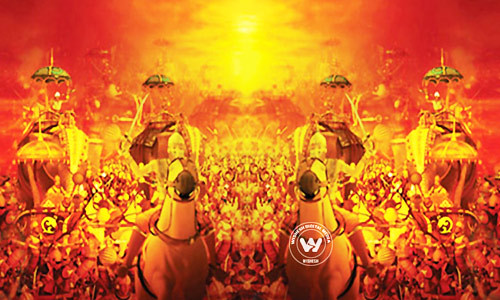
There was an ancient state on the other side of the Himalayas in the North which
was called as Madra Desh in Vedic times. According to Aitrai Brahmin, since this
was located in the North of the other side of the Himalayas it is also called
Uttarkuru. During the time of Mahabharata, Shalya was the King of Madra Desh.
His sister Madri was married to Pandu. Sahadev and Nakul were Madri's sons.
For the Rajsurya Yagya organized by Yudhishthir, residents of Madra had come
with gifts for Yudhishthir.
was called as Madra Desh in Vedic times. According to Aitrai Brahmin, since this
was located in the North of the other side of the Himalayas it is also called
Uttarkuru. During the time of Mahabharata, Shalya was the King of Madra Desh.
His sister Madri was married to Pandu. Sahadev and Nakul were Madri's sons.
For the Rajsurya Yagya organized by Yudhishthir, residents of Madra had come
with gifts for Yudhishthir.
Ujjanak: (Nainital, Uttar Pradesh)
6
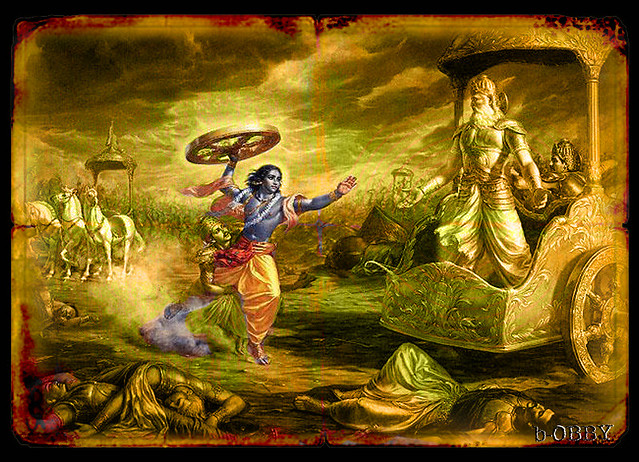
This was an ancient city near Kashipur, Nainital district, Uttar Pradesh.
Guru Dronacharya had taught archery to the Pandavas and Kauravas over here.
On Guru Dronacharya's orders, Kunti's son Bhima had established Shivlinga here.
That is why this place is also called Bhimshankar. There is a huge temple of Lord
Shiva over here. Few scholars consider this Shivlinga one of the twelve Jyotirlingas.
Guru Dronacharya had taught archery to the Pandavas and Kauravas over here.
On Guru Dronacharya's orders, Kunti's son Bhima had established Shivlinga here.
That is why this place is also called Bhimshankar. There is a huge temple of Lord
Shiva over here. Few scholars consider this Shivlinga one of the twelve Jyotirlingas.
Shivi Desh: (South Punjab, North border of India)
7

Shivi desh was located on the north border of India in South Punjab. The grandson
of the generous King Ushinar was Shaivya who had got his daughter Devika married
to Yudhishthir. In the war of Mahabharata, Shaivya played a major role of an archer
from the side of the Pandavas.
of the generous King Ushinar was Shaivya who had got his daughter Devika married
to Yudhishthir. In the war of Mahabharata, Shaivya played a major role of an archer
from the side of the Pandavas.
Banganga: (Kurukshetra, Punjab, now Haryana)
8
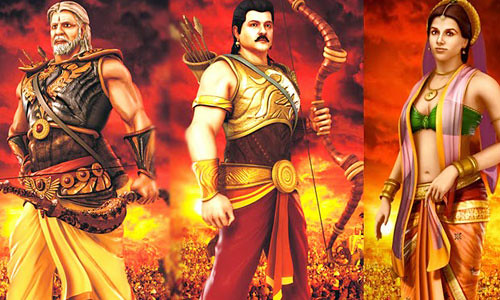
This is a place of pilgrimage located three kilometers away from Kurukshetra.
After being injured in the war of Mahabharata, Bhisma Pitamah had laid down
here on Sharsaiya (bed of arrows). On being asked by Bhisma for water, Arjun
shot an arrow in the ground and a stream of the water of Ganga came out and
went straight into Bhisma Pitamah's mouth and quenched his thirst.
After being injured in the war of Mahabharata, Bhisma Pitamah had laid down
here on Sharsaiya (bed of arrows). On being asked by Bhisma for water, Arjun
shot an arrow in the ground and a stream of the water of Ganga came out and
went straight into Bhisma Pitamah's mouth and quenched his thirst.
Kurukshetra: (Ambala, Punjab, now Haryana)
9
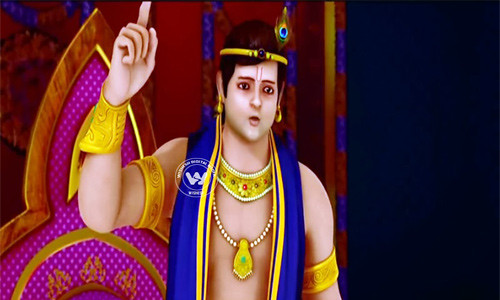
Famous as the battlefield of the war of Mahabharata, Kurukshetra is situated forty
kilometers to the East of Ambala city. In ancient times, Brahmaji had organized a
yagya here. That time this was an extensive land area. In those days it was known
as the altar for sacrifice of Lord Brahma. Lord Krishna had revealed the sermon
of Gita before the war of Mahabharata at this place. Today a lake named Brahma
Sarovar here is very famous for its glory. At the time of a Solar eclipse pilgrims
from distant places come here to take a dip in this lake. According to the Bhagwat,
before the war of Mahabharata, Lord Krishna along with other members of Yaduvansh
had come here for a dip in the Brahmakund.
kilometers to the East of Ambala city. In ancient times, Brahmaji had organized a
yagya here. That time this was an extensive land area. In those days it was known
as the altar for sacrifice of Lord Brahma. Lord Krishna had revealed the sermon
of Gita before the war of Mahabharata at this place. Today a lake named Brahma
Sarovar here is very famous for its glory. At the time of a Solar eclipse pilgrims
from distant places come here to take a dip in this lake. According to the Bhagwat,
before the war of Mahabharata, Lord Krishna along with other members of Yaduvansh
had come here for a dip in the Brahmakund.
Hastinapur: (near Meerut, Uttar Pradesh)
10
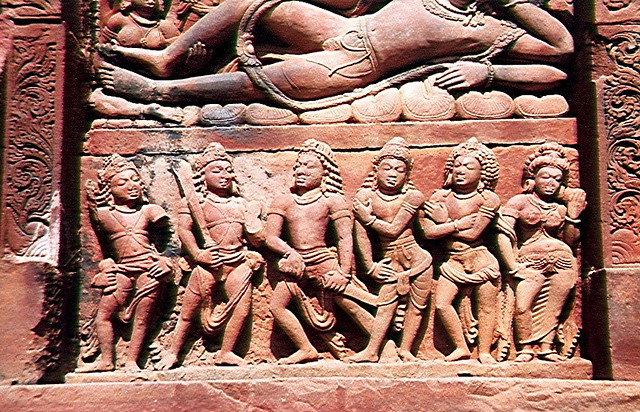
Hastinapur, located near Meerut in Uttar Pradesh was the grand city of Mahabharata
time. This was the capital of the Kauravas and the Pandavas. Hastinapur has witnessed
many famous incidences described in Mahabharata. Here, Yudhishthir lost his
brothers and Draupadi along with his wealth in the game of gamble. Krishna had
visited the court of Dhritrashtra being a peace messenger of the Pandavas. Before
the birth of the Pandavas and Kauravas, Bhisma had taken an oath here to not to marry
in life and let go of his right to the throne as his father Shantanu wanted to marry a
boatman's daughter Satyavati. After winning the war of Mahabharata, Pandavas made
Hastinapur as their capital.
time. This was the capital of the Kauravas and the Pandavas. Hastinapur has witnessed
many famous incidences described in Mahabharata. Here, Yudhishthir lost his
brothers and Draupadi along with his wealth in the game of gamble. Krishna had
visited the court of Dhritrashtra being a peace messenger of the Pandavas. Before
the birth of the Pandavas and Kauravas, Bhisma had taken an oath here to not to marry
in life and let go of his right to the throne as his father Shantanu wanted to marry a
boatman's daughter Satyavati. After winning the war of Mahabharata, Pandavas made
Hastinapur as their capital.
Varnavat: (Near Meerut, Uttarpradesh)
11

It is a city located near Meerut in Uttarpradesh as described in Mahabharata. It was
here that Duryodhan had built a Lakshgriha (wax house) to kill the Pandavas. This city
is situated on the banks of River Ganga. To avoid the war of Mahabharata, Pandavas
had asked for five villages from the Kauravas, Varnavat was one of these five cities.
Even today there is a small village here named Barnava which reminds one of the
Mahabharata periods.
here that Duryodhan had built a Lakshgriha (wax house) to kill the Pandavas. This city
is situated on the banks of River Ganga. To avoid the war of Mahabharata, Pandavas
had asked for five villages from the Kauravas, Varnavat was one of these five cities.
Even today there is a small village here named Barnava which reminds one of the
Mahabharata periods.
Panchal Pradesh: (near Himalayas, Uttar Pradesh)
12
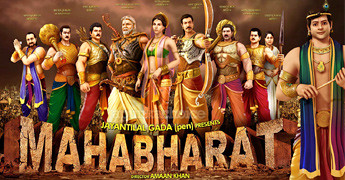
As mentioned in Mahabharata, Panchal Pradesh was located between the Himalayas and the
River Chamba on both sides of the River Ganga. Once when the King of Panchal got the news
of an attack from the King of Ayodhya, he said that his five (panch) sons only were enough
to fight the war. Since then it was called "Panchal". During the time of Mahabharata half of
Panchal was owned by King Drupad and the other half was owned by Dronacharya. Draupadi
was daughter of the King Drupad and married to Arjun after he won over her in the Swayamvar.
Draupadi was named "Panchali" as she was the princess of Panchal.
River Chamba on both sides of the River Ganga. Once when the King of Panchal got the news
of an attack from the King of Ayodhya, he said that his five (panch) sons only were enough
to fight the war. Since then it was called "Panchal". During the time of Mahabharata half of
Panchal was owned by King Drupad and the other half was owned by Dronacharya. Draupadi
was daughter of the King Drupad and married to Arjun after he won over her in the Swayamvar.
Draupadi was named "Panchali" as she was the princess of Panchal.
Indraprastha: (South of present day New Delhi):
13
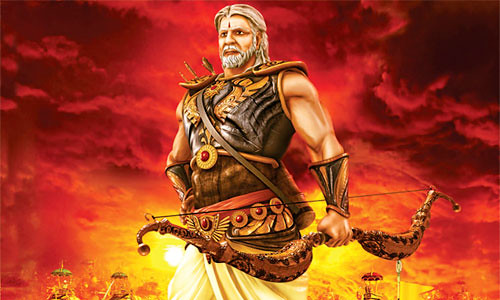
Indraprastha was a grand city situated on the South of present day New Delhi. The Pandavas
had established this city after destroying Khandav Van (forest). Vishwakarma, the architect
of the devtas (deities) had designed this city. This city was the capital of the Pandavas.
Even today, there is a small town named Indraprastha which reminds of the ancient town
Indraprastha.
had established this city after destroying Khandav Van (forest). Vishwakarma, the architect
of the devtas (deities) had designed this city. This city was the capital of the Pandavas.
Even today, there is a small town named Indraprastha which reminds of the ancient town
Indraprastha.
Vrindavan: (Mathura, Uttarpradesh)
14
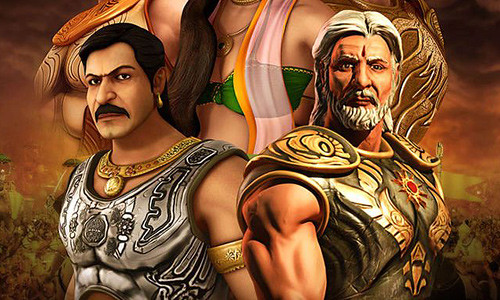
Vrindavan is situated ten kilometers away from Mathura in Uttarpradesh. Vrinda had
observed penance here to attain Krishna, since then this place is known as Vrindavan.
Vrindavan is the place of Lord Krishna's Bal- leelayen (playful acts done in childhood).
Lord Krishna had played Rasleela with the gopis in Vrindavan. Even today Rasleela is
the main attraction of this place. There are many famous temples here, of which the temple
of Bankebihari and Radhavallabh is very famous. The only events held here are the Shringar
(ornamenting) on Sharad Purnima (full moon day of Ashvin- October or November)
and Aarti (praying God with a lighted lamp) on Krishna Janmashtami.
observed penance here to attain Krishna, since then this place is known as Vrindavan.
Vrindavan is the place of Lord Krishna's Bal- leelayen (playful acts done in childhood).
Lord Krishna had played Rasleela with the gopis in Vrindavan. Even today Rasleela is
the main attraction of this place. There are many famous temples here, of which the temple
of Bankebihari and Radhavallabh is very famous. The only events held here are the Shringar
(ornamenting) on Sharad Purnima (full moon day of Ashvin- October or November)
and Aarti (praying God with a lighted lamp) on Krishna Janmashtami.
Gokul: (Uttar Pradesh)
15
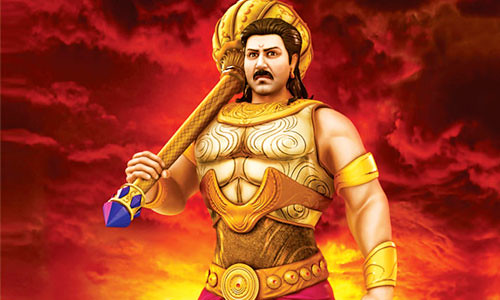
Gokul is situated on the banks of River Yamuna, eight kilometers away from Mathura.
To protect Krishna from Kans, Vasudev had left Krishna at his friend Nandrai's house
in Gokul. Krishna and his elder brother Balram were brought up in Gokul. Shri Krishna
revealed the sermon of Gita to Arjun before the war of Mahabharata and became Arjun's
charioteer during the war. Balram taught the art of mace fight to Bhima and Duryodhan.
To protect Krishna from Kans, Vasudev had left Krishna at his friend Nandrai's house
in Gokul. Krishna and his elder brother Balram were brought up in Gokul. Shri Krishna
revealed the sermon of Gita to Arjun before the war of Mahabharata and became Arjun's
charioteer during the war. Balram taught the art of mace fight to Bhima and Duryodhan.
Barsana: (Uttar Pradesh)
16

Barsana, 21 km from Govardhan Mountain, has four hilltops that represent the four faces
of Brahma the Creator. Each hilltop is associated with some incident from Krishna's life.
On Mor Kutir top, he danced guised as a peacock to win the love of Radha. Radha's
parents lived in Barsana. The house of Radha's father is atop the Brahma Hill in Barsana.
On this site is the Larily Lal (an endearing name for Radha) temple.
of Brahma the Creator. Each hilltop is associated with some incident from Krishna's life.
On Mor Kutir top, he danced guised as a peacock to win the love of Radha. Radha's
parents lived in Barsana. The house of Radha's father is atop the Brahma Hill in Barsana.
On this site is the Larily Lal (an endearing name for Radha) temple.
Mathura: (Uttar Pradesh)
17

Located on the banks of the River Yamuna, Mathura was a famous place of pilgrimage
during Mahabharata period. In the Dwapar Age, the Kshatriyas of King Shursen's lineage
made this as their capital. Shri Krishna was born here. Shri Krishna killed the oppressor
Kans, son of King Ugrasen and got back Ugrasen his throne. After the fight in between
the Yaduvanshis, when the Yadavas were killed, Yudhishthir crowned Brijnath, great
grandson of Krishna the King of Mathura.
during Mahabharata period. In the Dwapar Age, the Kshatriyas of King Shursen's lineage
made this as their capital. Shri Krishna was born here. Shri Krishna killed the oppressor
Kans, son of King Ugrasen and got back Ugrasen his throne. After the fight in between
the Yaduvanshis, when the Yadavas were killed, Yudhishthir crowned Brijnath, great
grandson of Krishna the King of Mathura.
Angadesh (Malini Nagari): (Gonda, Uttar Pradesh)
18

Malini Nagari was the capital of an ancient region of the Gonda district in Uttar Pradesh.
Duryodhan had throned Karna the King of this state. Duryodhan had received this state as
a gift from Jarasandh. The capital Malini Nagari is a Shaktipeeth. According to the Puranas,
Sati's right hand after being cut by the chakra of Vishnu had fallen here.
Duryodhan had throned Karna the King of this state. Duryodhan had received this state as
a gift from Jarasandh. The capital Malini Nagari is a Shaktipeeth. According to the Puranas,
Sati's right hand after being cut by the chakra of Vishnu had fallen here.
Naimisharanya: (Uttar Bharat)
19

Near the Gomati Station of Northern Railway, on the banks of the River Gomati is
situated a place of pilgrimage named Naimisharanya. According to an ancient story,
to find out the right place to perform a Gyansatra (sacrifice) Saint Shonak swirled
the Chakra given by Lord Brahma. Brahmaji had said that on swirling the Chakra,
wherever the circumference of the wheel will fall, that place will be the perfect place
for the sacrifice to be performed. The circumference of the Chakra fell in a Tapovan
(a forest in which ascetics perform religious austerities) on the banks of the River
Gomati and became famous as a place of pilgrimage. Here only at the time of the
Yagya of Shonak Rishi, Ugrashruva said the story of Mahabharata. During the time
of the war of Mahabharata, Balram had also visited this place while going on a pilgrimage.
situated a place of pilgrimage named Naimisharanya. According to an ancient story,
to find out the right place to perform a Gyansatra (sacrifice) Saint Shonak swirled
the Chakra given by Lord Brahma. Brahmaji had said that on swirling the Chakra,
wherever the circumference of the wheel will fall, that place will be the perfect place
for the sacrifice to be performed. The circumference of the Chakra fell in a Tapovan
(a forest in which ascetics perform religious austerities) on the banks of the River
Gomati and became famous as a place of pilgrimage. Here only at the time of the
Yagya of Shonak Rishi, Ugrashruva said the story of Mahabharata. During the time
of the war of Mahabharata, Balram had also visited this place while going on a pilgrimage.
Kaushambi: (Uttar Pradesh)
20
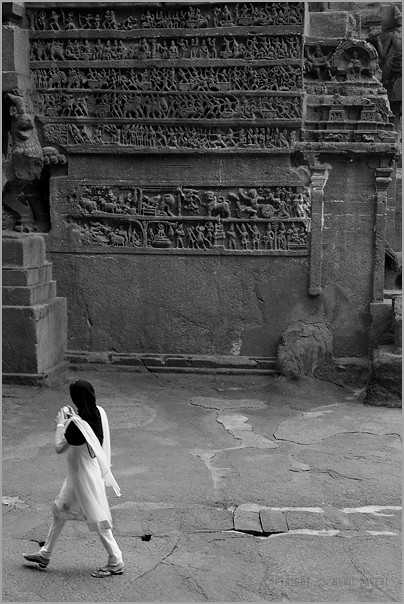
Kaushambi was the capital of Vatsa desh during the Mahabharata period and situated
to the south of River Ganga near present day city of Allahabad. The residents of Vatsa
desh had supported Kauravas in the war of Mahabharata. Later, Kuruvanshis took over
this state. Parikshit's son Janmejay had made Kaushambi his capital.
to the south of River Ganga near present day city of Allahabad. The residents of Vatsa
desh had supported Kauravas in the war of Mahabharata. Later, Kuruvanshis took over
this state. Parikshit's son Janmejay had made Kaushambi his capital.
Kashi: (Uttar Pradesh)
21
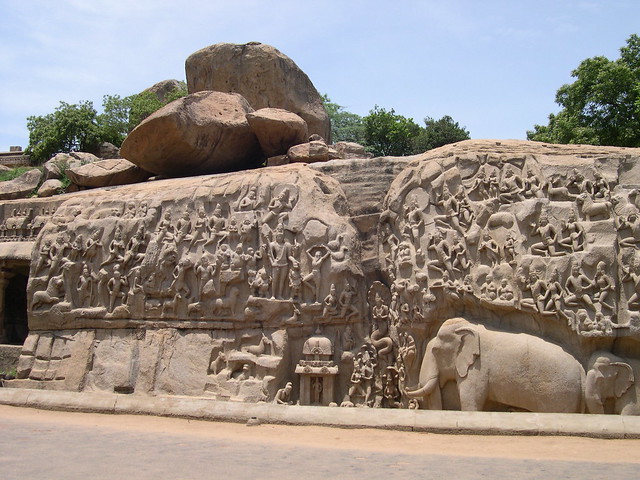
The ancient city of Mahabharata period, Kashi was famous as the chief education centre o
f India. Bhisma Pitamah had won over Amba, Ambika and Ambalika, the three daughters of
Kashi King. Bhisma wanted to get them married to Vichitravirya. Amba was in love with
Shalya, brother of Shishupal, so she refused to marry Vichitravirya. So Ambika and Ambalika
were married to Vichitravirya. Dhritrashtra was Ambika's son and Pandu was Ambalika's
son. Dhritrashtra's sons were called Kauravas and Pandu's sons were called Pandavas.
The war of Mahabharata was fought between the Kauravas and the Pandavas.
f India. Bhisma Pitamah had won over Amba, Ambika and Ambalika, the three daughters of
Kashi King. Bhisma wanted to get them married to Vichitravirya. Amba was in love with
Shalya, brother of Shishupal, so she refused to marry Vichitravirya. So Ambika and Ambalika
were married to Vichitravirya. Dhritrashtra was Ambika's son and Pandu was Ambalika's
son. Dhritrashtra's sons were called Kauravas and Pandu's sons were called Pandavas.
The war of Mahabharata was fought between the Kauravas and the Pandavas.
Ekachakranagari: (Aarah, Bihar)
22
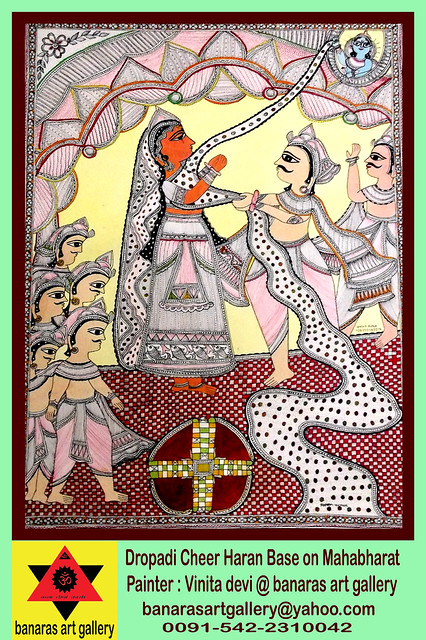
During the period of Mahabharata, Aarah was known as Ekachakranagari. After
being saved from the Lakshgriha, Pandavas had lived in Ekachakranagari for
few days at a Brahmin's house. Every day one person was being sent from
Ekachakranagari for the food of a giant named Bakasur. One day, it was this
Brahmin's turn where Pandavas were staying. To save the Brahmin, Bhima
went to Bakasur in place of him and killed him. It was here only that Bakasur's
son Bhishak had caught hold of the horse of Yudhishthir's Ashvamedh Yagya
and later was killed by Arjun.
being saved from the Lakshgriha, Pandavas had lived in Ekachakranagari for
few days at a Brahmin's house. Every day one person was being sent from
Ekachakranagari for the food of a giant named Bakasur. One day, it was this
Brahmin's turn where Pandavas were staying. To save the Brahmin, Bhima
went to Bakasur in place of him and killed him. It was here only that Bakasur's
son Bhishak had caught hold of the horse of Yudhishthir's Ashvamedh Yagya
and later was killed by Arjun.
Magadh: (South Bihar)
23
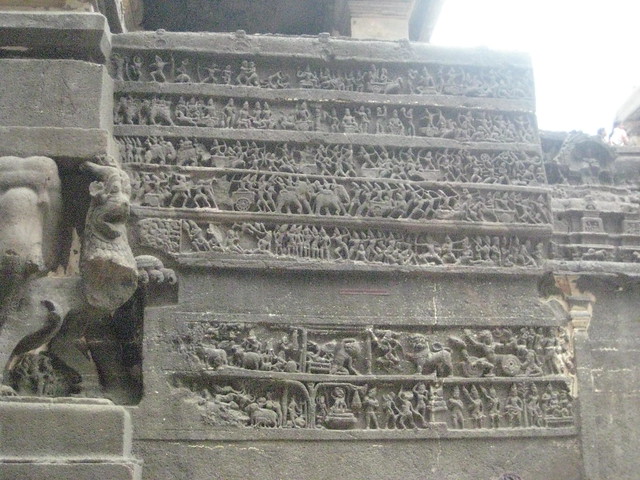
The ancient name of present day South Bihar was Magadh. During the time of
Mahabharata, Jarasandh ruled Magadh. Asti and Prapti, two daughters of Jarasandh
were married to Kans. After Krishna killed Kans, he became an enemy of Jarasandh.
Jarasandh attacked Mathura many times. For the Rajsurya Yagya performed by
Yudhishthir, Krishna, Arjun and Bhima went to Magadh in the disguise of Brahmins
and Bhima killed Jarasandh while wrestling. In the war of Mahabharata, the residents
of Magadh had supported the Pandavas.
Mahabharata, Jarasandh ruled Magadh. Asti and Prapti, two daughters of Jarasandh
were married to Kans. After Krishna killed Kans, he became an enemy of Jarasandh.
Jarasandh attacked Mathura many times. For the Rajsurya Yagya performed by
Yudhishthir, Krishna, Arjun and Bhima went to Magadh in the disguise of Brahmins
and Bhima killed Jarasandh while wrestling. In the war of Mahabharata, the residents
of Magadh had supported the Pandavas.
Pundrudesh: (Bihar)
24
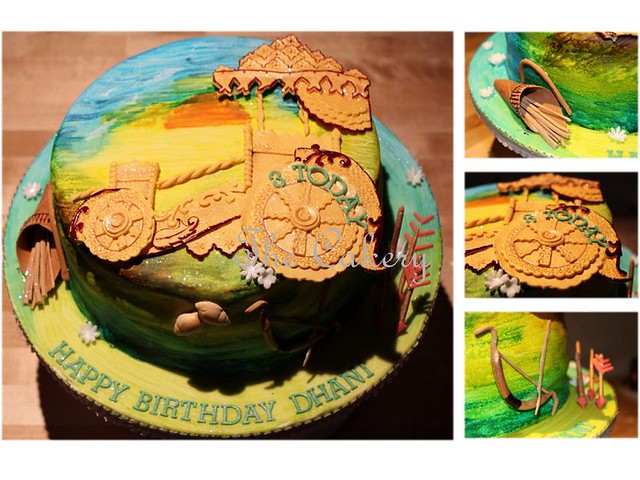
A part of Bihar was known as Pundru Desh during the time of Mahabharata.
The King Pondrak of this region was a friend of Jarasandh and thought himself
to be Krishna. He used to dress up like Krishna. He used to make himself famous
in the names of "Vasudev" and "Purshottam". He was present at the Swayamvar
(a choice made by a princess of her husband in public) of Draupadi. Due to his ego,
he challenged Krishna to discard his dress or else get ready for a fight. Krishna
fought with him and killed him. According to one more mention, when Jarasandh
attacked Mathura, Pondrak was with him. Later he attacked Dwarka and was killed
by Krishna there.
The King Pondrak of this region was a friend of Jarasandh and thought himself
to be Krishna. He used to dress up like Krishna. He used to make himself famous
in the names of "Vasudev" and "Purshottam". He was present at the Swayamvar
(a choice made by a princess of her husband in public) of Draupadi. Due to his ego,
he challenged Krishna to discard his dress or else get ready for a fight. Krishna
fought with him and killed him. According to one more mention, when Jarasandh
attacked Mathura, Pondrak was with him. Later he attacked Dwarka and was killed
by Krishna there.
Pragjyotishpur: (Gowhati, Assam)
25

The capital of ancient Assam state, Pragjyotishpur was located near present day
Gowhati. During the Mahabharata times Narkasur was the King of this state.
He had made sixteen thousand girls his captive. He fought a battle with Lord Krishna.
Shri Krishna killed Narkasur and took all the sixteen thousand girls to Dwarka and
married them. Later, Bhagdutt, the ruler of Pragjyotishpur fought the war of
Mahabharata from the side of the Kauravas and was killed by Arjun. Here, near
the Neelkanth Mountain is the famous temple of Kamakhya Devi built by Narkasur.
Gowhati. During the Mahabharata times Narkasur was the King of this state.
He had made sixteen thousand girls his captive. He fought a battle with Lord Krishna.
Shri Krishna killed Narkasur and took all the sixteen thousand girls to Dwarka and
married them. Later, Bhagdutt, the ruler of Pragjyotishpur fought the war of
Mahabharata from the side of the Kauravas and was killed by Arjun. Here, near
the Neelkanth Mountain is the famous temple of Kamakhya Devi built by Narkasur.
Kamakhya: (Assam)
26
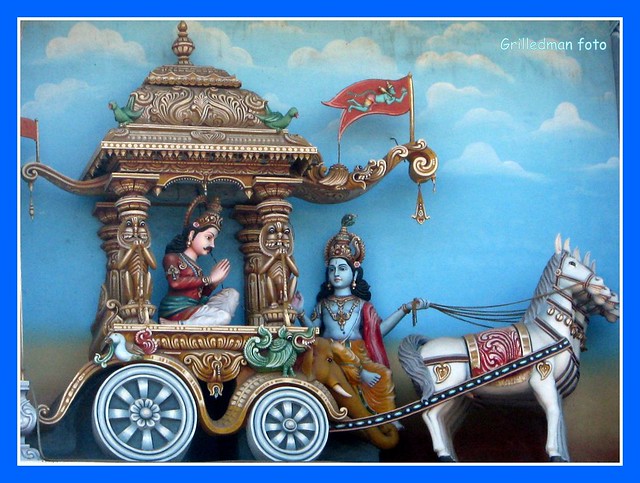
Kamakhya was a famous Shaktipeeth city, ten kilometers away from Gowhati in Assam.
During the time of Mahabharata, Narkasur had built here a temple of Kamakhya Devi.
According to Bhagwat Purana, when Lord Shiva was roaming around like a man in
despair with the dead body of Sati, then Lord Vishnu with the help of his Sudarshan
Chakra (a divine discus which swirls around his index finger), cut Sati's dead body into
pieces and dropped them one by one, so that Shiva gets released off this weight and
returns to being normal. There were fifty one pieces of the dead body of Sati cut by
Lord Vishnu and the places on the earth where they fell are known as Shaktipeeth.
Each Shaktipeeth is connected with one of the body part of Sati. Kamakhya in Assam
is where the Yoni (vagina) of Sati fell and is considered a very powerful centre of
Shakti (female) worship. Kamakhya is worshipped by the Tantriks (spiritual person).
During the time of Mahabharata, Narkasur had built here a temple of Kamakhya Devi.
According to Bhagwat Purana, when Lord Shiva was roaming around like a man in
despair with the dead body of Sati, then Lord Vishnu with the help of his Sudarshan
Chakra (a divine discus which swirls around his index finger), cut Sati's dead body into
pieces and dropped them one by one, so that Shiva gets released off this weight and
returns to being normal. There were fifty one pieces of the dead body of Sati cut by
Lord Vishnu and the places on the earth where they fell are known as Shaktipeeth.
Each Shaktipeeth is connected with one of the body part of Sati. Kamakhya in Assam
is where the Yoni (vagina) of Sati fell and is considered a very powerful centre of
Shakti (female) worship. Kamakhya is worshipped by the Tantriks (spiritual person).
Manipur: (East India)
27

Surrounded by Nagaland, Assam, Mizoram and Burma, Manipur was the ancient city
of Mahabharata times. Manipur's King Chitravahan had a daughter named Chitraganda.
She was married to Arjun and had a valorous son named Babhruvahan. After King
Chitravahan died, Babhruvahan was crowned the King of Manipur as Chitravahan
did not have any son. Babhruvahan had taken part in the Rajsurya Yagya performed
by the Pandavas.
of Mahabharata times. Manipur's King Chitravahan had a daughter named Chitraganda.
She was married to Arjun and had a valorous son named Babhruvahan. After King
Chitravahan died, Babhruvahan was crowned the King of Manipur as Chitravahan
did not have any son. Babhruvahan had taken part in the Rajsurya Yagya performed
by the Pandavas.
Sindhu Desh: (Sindh- Punjab, Mohan-jo-Daro)
28
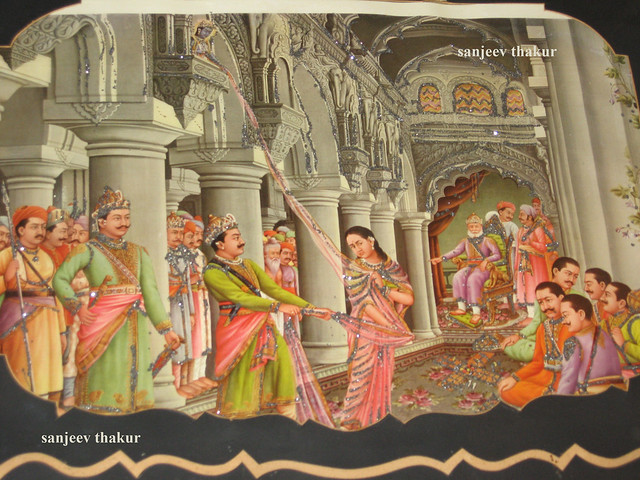
The ancient Sindhu Desh of Mahabharata time was famous for art-literature and
commercebusiness. The King Jaydrath of Sindhu desh was married to Dushaala,
daughter of Dhritrashtra. In the war of Mahabharata, Jaydrath supported the Kauravas.
Jaydrath was the chief reason of the death of Arjun's son Abhimanyu who was
caught up in the Chakravyuh. To take revenge of Abhimanyu's death, Arjun killed Jaydrath.
commercebusiness. The King Jaydrath of Sindhu desh was married to Dushaala,
daughter of Dhritrashtra. In the war of Mahabharata, Jaydrath supported the Kauravas.
Jaydrath was the chief reason of the death of Arjun's son Abhimanyu who was
caught up in the Chakravyuh. To take revenge of Abhimanyu's death, Arjun killed Jaydrath.
Matsya Desh: (North Rajasthan)
29

Matsya Desh located in the North region of present day Rajasthan was one of the
chief states of the Mahabharata times. Its capital was Viraatnagari. Pandavas had
lived here at the King Viraat's palace in the disguise for one year as they were to
live incognito after the exile. During this time, King Viraat's brother-in-law and
commander Kichak set a bad eye on Draupadi and was killed by Bhima. Arjun's
son Abhimanyu was married to King Viraat's daughter Uttara. There is a mention
of Matsya Desh even in the Vedic times.
chief states of the Mahabharata times. Its capital was Viraatnagari. Pandavas had
lived here at the King Viraat's palace in the disguise for one year as they were to
live incognito after the exile. During this time, King Viraat's brother-in-law and
commander Kichak set a bad eye on Draupadi and was killed by Bhima. Arjun's
son Abhimanyu was married to King Viraat's daughter Uttara. There is a mention
of Matsya Desh even in the Vedic times.
Muchhkand Tirth: (Dhoulpur, Rajasthan)
30
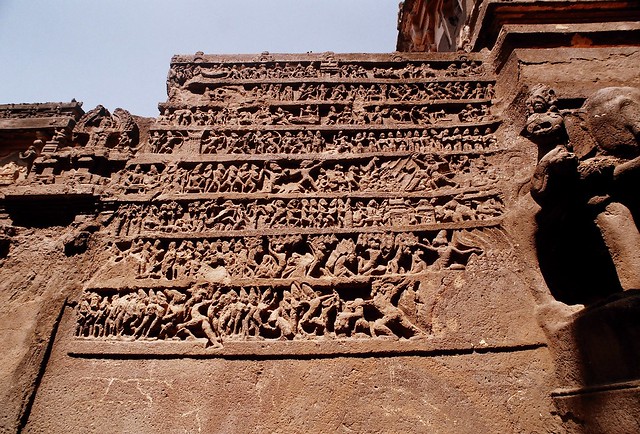
In the times of Mahabharata, there was a dangerous mountain range in Dhoulpur,
Rajasthan. After winning over Mathura, when Kaalyavan followed Krishna,
Krishna hid himself in a cave in this mountain range and covered Muchhkand
who was sleeping there with his Pitambar (yellow cloth). Kaalyavan woke up
Muchhkand and moment Muchhkand set his eyes on Kaalyavan, he was reduced
to ashes. After the war of Mahabharata when the Pandavas left for Himalayas and
after Krishna's departure to Golok, Kalyug first stepped here.
Rajasthan. After winning over Mathura, when Kaalyavan followed Krishna,
Krishna hid himself in a cave in this mountain range and covered Muchhkand
who was sleeping there with his Pitambar (yellow cloth). Kaalyavan woke up
Muchhkand and moment Muchhkand set his eyes on Kaalyavan, he was reduced
to ashes. After the war of Mahabharata when the Pandavas left for Himalayas and
after Krishna's departure to Golok, Kalyug first stepped here.
Patan: (Mehsana, Gujarat)
31

Patan, situated near Mehsana, Gujarat was a famous commercial city in the
Mahabharata period. It is said that in the Dwapar Age there was Hidimbvan
around this city. During the period of their exile, the Pandavas had come here
and it was here only Bhima killed a demon named Hidimb and married his
sister Hidimba.
Mahabharata period. It is said that in the Dwapar Age there was Hidimbvan
around this city. During the period of their exile, the Pandavas had come here
and it was here only Bhima killed a demon named Hidimb and married his
sister Hidimba.
Vardayini Dham: (Rupalnagar, near Kalol, Gujarat)
32
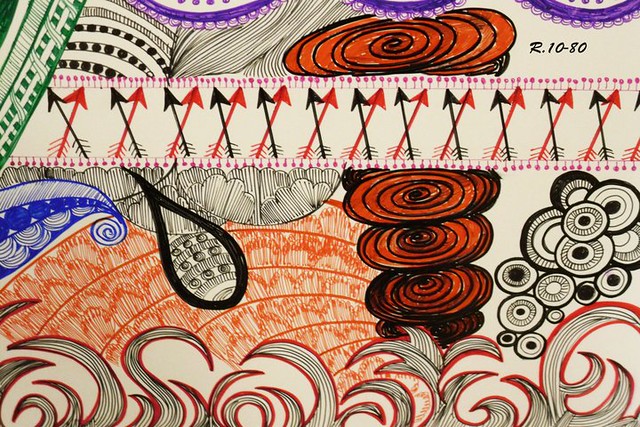
Rupalnagar was known as Rupavati during the time of Mahabharata. While going to
Viraatnagari, Pandavas had performed a pooja of Bhagwati Arya over here. As this
place was blessed by the Pandavas, the Devi was named Vardayini and the place was
named Vardayini Dham. There is a very big temple of Devi Bhagwati over here and
devotees in many numbers come to this temple.
Viraatnagari, Pandavas had performed a pooja of Bhagwati Arya over here. As this
place was blessed by the Pandavas, the Devi was named Vardayini and the place was
named Vardayini Dham. There is a very big temple of Devi Bhagwati over here and
devotees in many numbers come to this temple.
Dwarka: (Gujarat)
33

This is situated on the west coast of Gujarat and is an ancient city of the Mahabharata
period. To protect the Yadavas from on and off attacks of Jarasandh, Lord Krishna
shifted his capital from Mathura to Dwarka. In fact, there are two Dwarka cities.
One is on the banks of River Gomati where Krishna settled the Yadavas and carried
on the administration work of the state from there and the second one Bet Dwarka
where the citizens resided. Marine Archeologists have found the sunken remains of
Bet-Dwarka off the coast of Gujarat. It is estimated to be a couple of thousand years old.
period. To protect the Yadavas from on and off attacks of Jarasandh, Lord Krishna
shifted his capital from Mathura to Dwarka. In fact, there are two Dwarka cities.
One is on the banks of River Gomati where Krishna settled the Yadavas and carried
on the administration work of the state from there and the second one Bet Dwarka
where the citizens resided. Marine Archeologists have found the sunken remains of
Bet-Dwarka off the coast of Gujarat. It is estimated to be a couple of thousand years old.
Prabhas: (west coast of Gujarat)
34
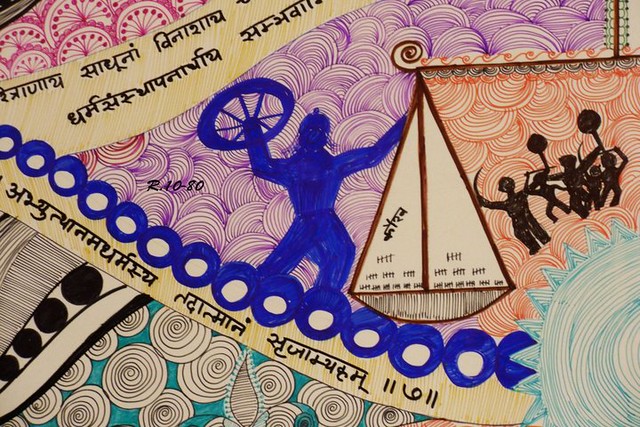
This is the famous place of pilgrimage located on the west seacoast of Gujarat. Dwarka
is also located within this region. During the Mahabharata period, when Krishna shifted
his capital from Mathura to Dwarka, he resided in Prabhas region. It was here only
that the Yaduvanshis fought amongst themselves and died. It was in Prabhas that
Lord Krishna was injured with the arrow of a hunter and left for his heavenly abode
(Golok). After Krishna's departure the whole area along with Dwarka sunk in the sea.
Modern marine –archeologists have found remains of this old city from under the sea.
is also located within this region. During the Mahabharata period, when Krishna shifted
his capital from Mathura to Dwarka, he resided in Prabhas region. It was here only
that the Yaduvanshis fought amongst themselves and died. It was in Prabhas that
Lord Krishna was injured with the arrow of a hunter and left for his heavenly abode
(Golok). After Krishna's departure the whole area along with Dwarka sunk in the sea.
Modern marine –archeologists have found remains of this old city from under the sea.
Avantika: (Ujjaini, Madhya Pradesh)
35
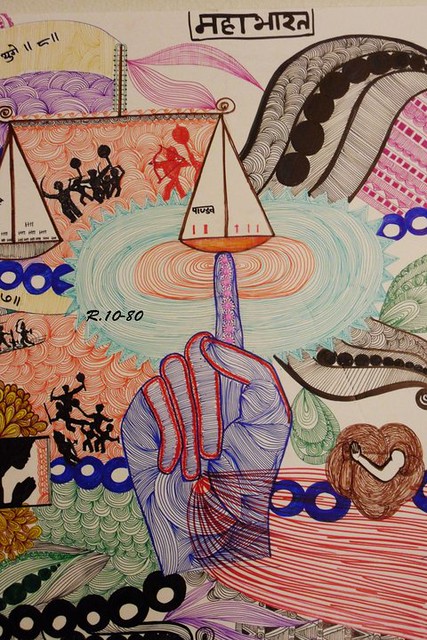
The present city Ujjain in Madhya Pradesh was famous in the name of Avantika or
Avanti during the Mahabharata period. Rishi Sandipani's ashram was in Avantika.
Lord Krishna and Balram had taken their education (archery and use of weapons)
from Sandipani. Avantika is considered one of the seven holy cities of India.
There is Mahakal Ling here, one of the twelve Jyotirlingas of Lord Shiva.
That is why Avantika is also called the city Of Mahakal.
Avanti during the Mahabharata period. Rishi Sandipani's ashram was in Avantika.
Lord Krishna and Balram had taken their education (archery and use of weapons)
from Sandipani. Avantika is considered one of the seven holy cities of India.
There is Mahakal Ling here, one of the twelve Jyotirlingas of Lord Shiva.
That is why Avantika is also called the city Of Mahakal.
Chedi: (Gwalior region, Madhya Pradesh)
36
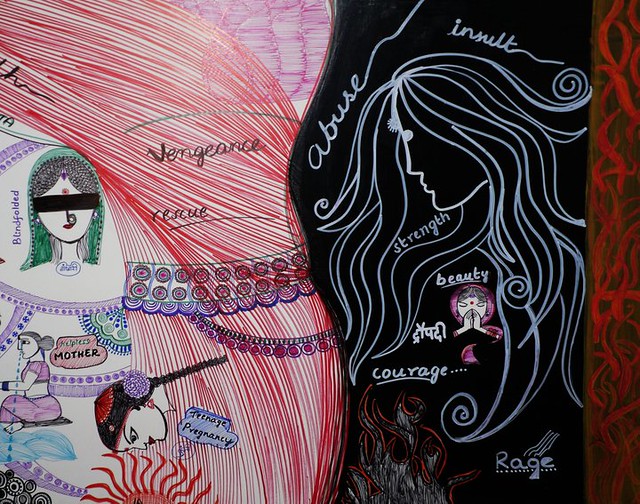
Located between the River Ganga and Narmada in Madhya Pradesh, the city of Chedi
was a grand city of the Mahabharata time. Shishupal, the King of Chedi was
the maternal cousin of Shri Krishna. Shishupal wanted to marry Rukmani but
Krishna abducted her and got married to her. Because of this, Shishupal always
remained angry with Krishna. While performing the Rajsurya Yagya, when
Yudhishthir wanted to give Krishna chief position, Chedi King Shishupal
scandalized Krishna and told him all sort of words. At this, Krishna killed him.
During the war of Mahabharata, the residents of Chedi supported the Kauravas.
was a grand city of the Mahabharata time. Shishupal, the King of Chedi was
the maternal cousin of Shri Krishna. Shishupal wanted to marry Rukmani but
Krishna abducted her and got married to her. Because of this, Shishupal always
remained angry with Krishna. While performing the Rajsurya Yagya, when
Yudhishthir wanted to give Krishna chief position, Chedi King Shishupal
scandalized Krishna and told him all sort of words. At this, Krishna killed him.
During the war of Mahabharata, the residents of Chedi supported the Kauravas.
Shonitpur: (Itarasi, Madhya Pradesh)
37

Shonitpur, a famous city during the Mahabharata time, was located near Suhagpur
few kilometers away from Itarasi in Madhya Pradesh. This ancient city was the
capital of Banasur. Banasur's daughter Usha was married to Aniruddha, grandson of
Lord Krishna. There is a temple of Lord Narsinha and is considered to be a place of pilgrimage.
few kilometers away from Itarasi in Madhya Pradesh. This ancient city was the
capital of Banasur. Banasur's daughter Usha was married to Aniruddha, grandson of
Lord Krishna. There is a temple of Lord Narsinha and is considered to be a place of pilgrimage.
Vidarbha: (Vidarbha Pradesh)
38
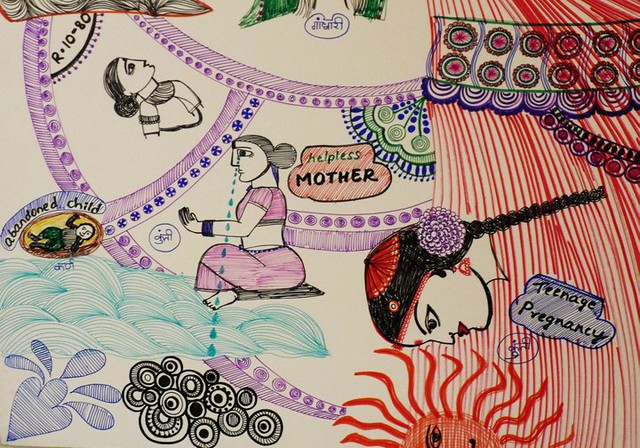
King Bhismak of Vidarbha, capital of Vidarbha Pradesh was a valorous person.
At the time of the Surya Yagya organized by the Pandavas, he had captured the
horse of the yagya. Due to this there was a fight between him and Sahadev and
he was defeated. Bhismak was Jarasandh's friend and considered Krishna as his
enemy. Shri Krishna had kidnapped his daughter Rukmani and married her.
At the time of the Surya Yagya organized by the Pandavas, he had captured the
horse of the yagya. Due to this there was a fight between him and Sahadev and
he was defeated. Bhismak was Jarasandh's friend and considered Krishna as his
enemy. Shri Krishna had kidnapped his daughter Rukmani and married her.
Revatak: (near Junagadh, Gujarat)
39

The Revatak Mountain near Junagadh in Gujarat is also known as Girnar.
This Mountain is near Dwarka. Arjun had abducted Subhadra from near this
Mountain and later with Krishna's approval married her.
Indrakil: (one of the mountains of Himalaya Ranges)
This Mountain is near Dwarka. Arjun had abducted Subhadra from near this
Mountain and later with Krishna's approval married her.
Indrakil: (one of the mountains of Himalaya Ranges)
40
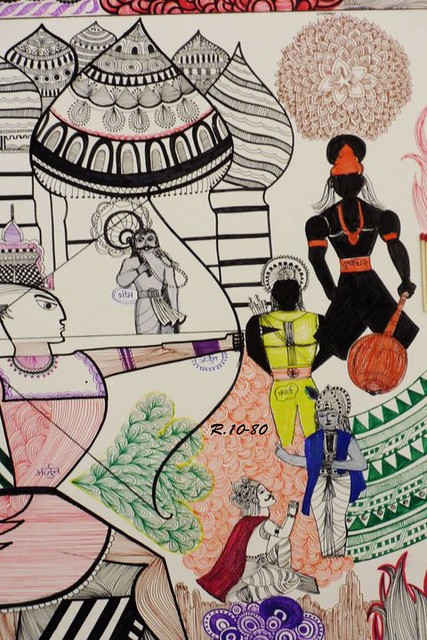
Mandarachal, one of the mountains of the Himalayan range is also called Indrakil.
After loosing everything in gamble, when Pandavas went to the Himalayas for penance,
Arjun had performed deep penance on the Indrakil Mountain. It was on this Mountain,
Lord Shiva in the disguise of a hunter fought with Arjun. On being pleased with
valor of Arjun in the fight, Lord Shiva presented him Pashupat Astra.
After loosing everything in gamble, when Pandavas went to the Himalayas for penance,
Arjun had performed deep penance on the Indrakil Mountain. It was on this Mountain,
Lord Shiva in the disguise of a hunter fought with Arjun. On being pleased with
valor of Arjun in the fight, Lord Shiva presented him Pashupat Astra.
Yayaatipur: (Cuttack, Orissa)
41
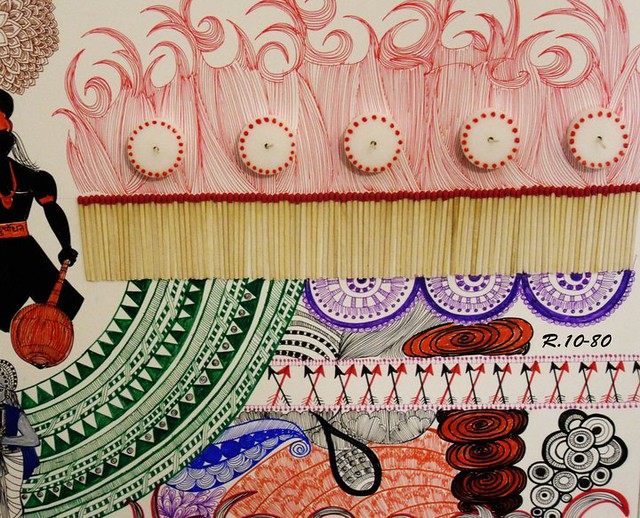
Orissa's present region Jajpur was known as Yayaatipur in the times of Mahabharata.
The River Vaitarni flows from near this region. Pandavas, along with Maharshi Lomesh
had offered Pind -dan (oblation of cooked rice to the manes- i.e. the spirit of those who
are dead) to their ancestors over here. According to an ancient description, Brahmaji had
performed ten Ashvamedh Yagya on the banks of River Vaitarni due to which this place
became famous as a holy city. Mountains of Mahabharata period.
The River Vaitarni flows from near this region. Pandavas, along with Maharshi Lomesh
had offered Pind -dan (oblation of cooked rice to the manes- i.e. the spirit of those who
are dead) to their ancestors over here. According to an ancient description, Brahmaji had
performed ten Ashvamedh Yagya on the banks of River Vaitarni due to which this place
became famous as a holy city. Mountains of Mahabharata period.
